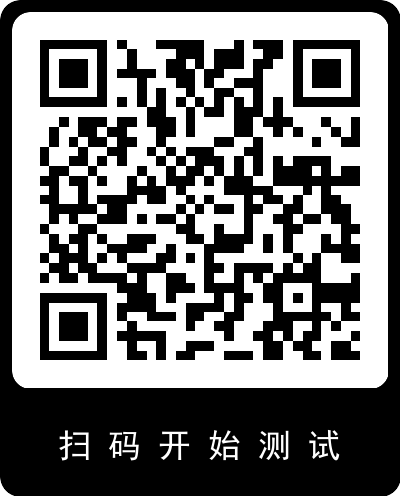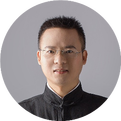If you are not clear about your constitution type, please test your constitution first.

Qi is an invisible energy that truly exists. Where there is Qi deficiency, there is insufficient energy, leading to functional inadequacies.1
1
7 Manifestations of Qi Deficiency Constitution
1. Individuals with lung Qi deficiency have insufficient lung function, resulting in a low voice, reluctance to speak, fatigue after talking, easy sweating, and susceptibility to colds.
2. Individuals with spleen Qi deficiency may experience puffy eyes and body swelling. Additionally, spleen Qi deficiency can lead to insufficient Qi and blood.
3. Individuals with kidney Qi deficiency may have poor sexual function, and the kidneys may fail to excrete fluids properly, leading to edema.
4. Large intestine Qi deficiency can cause constipation;
5. Stomach Qi deficiency leads to poor digestion and bloating.
6. Heart Qi deficiency can cause palpitations and shortness of breath.
7. Liver Qi deficiency indicates insufficient liver function and the ability to regulate Qi and blood, manifesting as dizziness and fatigue, with reduced capacity for love.
2
5 Major Risks of Qi Deficiency
1. Qi deficiency can lead to blood deficiency.
2. Qi deficiency can cause Qi stagnation.
3. Qi deficiency can lead to Qi sinking.
4. Qi deficiency can cause meridian obstruction.
5. Qi deficiency can also lead to blood stasis.
3
Methods to Regulate Qi Deficiency
Method 1: General Dietary Therapy: Astragalus Longan Porridge and Codonopsis Longan Tea
Astragalus Longan Porridge: 10g Astragalus (Huang Qi), 10g Longan (Gui Yuan), 10g Jujube (Da Zao), 30g Japonica rice (Jing Mi).
Tea: 10g Codonopsis (Dang Shen), 15g Longan flesh (Gui Yuan Rou).
People with Qi deficiency can add more Qi-tonifying foods to their diet: mushrooms, red dates, longan, Japonica rice, white lentils, chicken, beef, peanuts, etc.
Method 2: Acupoint Health Care: Zusanli (ST36), Baihui (GV20), Qihai (CV6), and Dan Zhong (CV17)
These four acupoints have excellent Qi tonifying and regulating effects. You can choose moxibustion to perform self-care and health maintenance.
Method 3: For upper jiao heart and lung Qi deficiency, the first choice is Qi-tonifying herbs.
NortheastGinseng (Ren Shen) is the most commonly used Qi-tonifying herb, often used as a health supplement, but it is warm in nature and can easily cause internal heat.
Codonopsis (Dang Shen) is commonly used as a Qi-tonifying herb, relatively inexpensive, but its Qi tonifying power is not as strong as ginseng.
American Ginseng (Xi Yang Shen) is a well-balanced Qi tonic with strong Qi tonifying effects and some yin-nourishing properties, not easily causing internal heat, but it is expensive.
Red Ginseng (Hong Shen) is red in color, enters the heart, and is commonly used to tonify heart Qi and Yang, but it is also relatively expensive and can easily cause internal heat.
Tai Zi Shen is the mildest among these Qi tonifying herbs, with weaker Qi tonifying power, suitable for children.
Astragalus (Huang Qi) is the king of Qi tonifying herbs, primarily benefiting the spleen and lungs, capable of tonifying Qi throughout the body, but it can easily cause internal heat.
For those with lung Qi deficiency who are prone to colds, it is recommended to use Yupingfeng San (Jade Windscreen Powder). However, please note that Yupingfeng San is not for treating colds and should not be taken during a cold; it should be taken after recovery to prevent future colds.
If it is purely a case of heart and lung Qi deficiency, using these Qi tonifying herbs can generally resolve the issue. Be cautious, as Qi tonics can easily cause internal heat. If internal heat occurs, it may be due to excessive dosage or an unsuitable tonic. In such cases, stop and analyze the reasons, adjust your approach, and resume tonifying without causing internal heat.
Method 4: For middle jiao spleen and stomach Qi deficiency, Si Jun Zi Tang (Four Gentlemen Decoction) is the first choice.
10g Ginseng (Ren Shen), 10g Atractylodes (Bai Zhu), 10g Poria (Fu Ling), 5g Honey-fried Licorice (Zhi Gan Cao).
This formula focuses on strengthening the spleen and tonifying spleen Qi, making it most suitable for symptoms of spleen and stomach Qi deficiency such as fatigue in the limbs, reduced appetite, and low voice.
Method 5: For lower jiao kidney Qi deficiency, it is recommended to use Shenqi Wan (Kidney Qi Pill) or similar patent medicines.
The name Shenqi Wan indicates its ability to tonify kidney Qi. As people age, the lower source may become deficient, and it is essential to nourish the foundation and stabilize the source; Shenqi Wan is a practical method.
Method 6: For those with both Qi and blood deficiency, use Ba Zhen Tang (Eight Treasure Decoction).
Ingredients: 5g Ginseng (Ren Shen), 10g Atractylodes (Bai Zhu), 10g Poria (Fu Ling), 5g Honey-fried Licorice (Zhi Gan Cao), 10g Angelica (Dang Gui), 15g Rehmannia (Shu Di Huang), 10g White Peony (Bai Shao), 5g Chuanxiong (Chuan Xiong).
This Ba Zhen Tang formula combines Si Jun Zi Tang and Si Wu Tang, using Si Jun Zi Tang to tonify Qi and Si Wu Tang to nourish blood, thus achieving a dual effect of tonifying Qi and blood.
Method 7: For spleen Qi deficiency with spleen and stomach Qi stagnation, use Xiang Sha Liu Jun Zi Tang (Aromatic and Sand Six Gentlemen Decoction).
Xiang Sha Liu Jun Zi Tang: 5g Mu Xiang, 5g Sha Ren, 10g Ban Xia, 5g Chen Pi, 5g Ren Shen, 10g Fu Ling, 10g Bai Zhu, 5g Zhi Gan Cao.
Method 8: For those with Qi deficiency and Qi sinking, use Buzhong Yiqi Tang (Tonify the Middle and Augment Qi Decoction) or Shengxian Tang (Lift the Sinking Decoction).
Buzhong Yiqi Tang: 20g Astragalus (Huang Qi), 10g Ginseng (Ren Shen), 10g Atractylodes (Bai Zhu), 10g Angelica (Dang Gui), 6g Chen Pi, 3g Sheng Ma, 3g Chai Hu, 5g Licorice (Gan Cao).
Shengxian Tang: 18g Fresh Astragalus (Sheng Huang Qi), 9g Anemarrhena (Zhi Mu), 5g Bupleurum (Chai Hu), 5g Platycodon (Jie Geng), 3g Sheng Ma.
Comparing these two, the formulation ideas are similar, both aim to lift Qi. The difference is that Shengxian Tang treats the sinking of the great Qi, meaning the Qi in the chest has sunk, focusing on the diaphragm, while Buzhong Yiqi Tang addresses the sinking of Qi in the spleen and stomach below the diaphragm.
Method 9: For Qi deficiency with meridian obstruction, acupuncture, moxibustion, and exercises are suitable therapeutic methods. The focus is on unblocking the obstruction in the meridians.
Method 10: For Qi deficiency with blood stasis, Buyang Huanwu Tang (Tonify Yang and Restore Five Decoction) is most suitable.
This type is most likely to occur in the elderly and those who have been bedridden for a long time.Ingredients:120g Astragalus (Huang Qi), 6g Angelica Tail (Gui Wei), 6g Red Peony (Chi Shao), 3g Earthworm (Di Long), 3g Chuanxiong (Chuan Xiong), 3g Peach Kernel (Tao Ren), 3g Safflower (Hong Hua).
4
Daily Maintenance for Qi Deficiency Constitution
Today, I shared 10 methods to regulate Qi deficiency. Similarly, to address the root cause, one must adjust their lifestyle habits to a healthy mode to completely transform into a healthy constitution.
I have summarized the 3 most common causes of Qi deficiency; you can compare them with your own:
1. Blind Weight Loss.Many people replace staple foods with fruits and vegetables to lose weight. The energy from food is essential for nourishment; if staple foods are avoided for a long time, one will develop Qi deficiency, which weakens the spleen’s ability to transform and transport, leading to dampness accumulation, making weight loss counterproductive.
2. Excessive Overexertion.Work and life pressures excessively deplete one’s vital energy, leading to overconsumption of energy.
3. Insufficient Exercise.A lack of exercise leads to Qi deficiency; the more Qi deficient one becomes, the less they want to exercise, creating a vicious cycle.
In addition to using some Qi tonifying Chinese herbs, the best way to tonify Qi in daily life is through moderate exercise. Choose an exercise method that suits you, within a tolerable range, and appropriate exercise can help adjust the Qi deficiency constitution.
Recommended Learning
1. Introduction to Basic TCM

2. 9 Major Constitution Regulation Plans

3. 100 Common Chinese Herbs Explained

4. 100 Classic Common Formulas

5. 365 Common Disease Regulations


A barefoot person, a moderate individual, knows neither the heavens nor the earth. This account aims to promote TCM culture, not as a platform for seeking medical advice. The formulas shared here are for learning and exchange; do not blindly try medications.
The most down-to-earth TCM public account

↑↑↑Scan to follow

